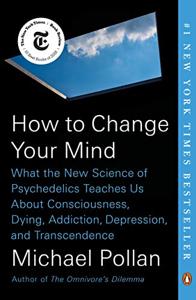
Want to learn the ideas in How To Change Your Mind better than ever? Read the world’s #1 book summary of How To Change Your Mind by Michael Pollan here.
Read a brief 1-Page Summary or watch video summaries curated by our expert team. Note: this book guide is not affiliated with or endorsed by the publisher or author, and we always encourage you to purchase and read the full book.
Video Summaries of How To Change Your Mind
We’ve scoured the Internet for the very best videos on How To Change Your Mind, from high-quality videos summaries to interviews or commentary by Michael Pollan.
1-Page Summary of How To Change Your Mind
Overall Summary
Michael Pollan, an American author and journalist, wrote a book called How to Change Your Mind: What the New Science of Psychedelics Teaches Us About Consciousness, Dying, Addiction, Depression, and Transcendence. It follows his own journey into psychedelic research after he became curious about psychedelics. He was also motivated by his desire to experience them himself. The book weaves together history and science with personal anecdotes from Michael’s experiences with psychedelics such as LSD and psilocybin mushrooms (also known as “The Toad”).
How to Change Your Mind is a book about the history of psychedelics, how they came to be used in medical treatment, and what we know about the science behind them. The author also describes his personal experiences with psychedelic drugs and interviews people who have used psychedelics for various treatments.
This book is about the importance of psychedelic research and how it can help people improve their lives. Pollan’s investigation into psychedelics leads him to believe that ego death, or a loss of self-awareness, is central to the spiritual experience and that psychedelics can combat the rigidity that ego keeps us in.
Prologue: “A New Door”
Pollan begins his book by discussing the history of psychedelics. He explains that the drugs have been used in many different ways, including to treat mental illnesses and for spiritual purposes. The author focuses on two compounds: lysergic acid diethylamide (LSD) and psilocybin.
Albert Hofmann first synthesized LSD in 1938. He did not intend to make a drug with psychoactive effects, but he accidentally ingested the compound and realized it was special.
Psilocybin (a hallucinogenic drug) has been around for thousands of years. It was used by indigenous cultures in Mexico and Central America, but then it fell out of favor after the Spanish conquest. The 1960s brought a resurgence in psychedelic drugs, which were popularized at the time by counterculture figures such as Timothy Leary. By the end of that decade, however, bad trips caused people to fear psychedelics and use them less frequently. In recent decades scientists have sought to renew research into these substances because they feel we’ve lost much ground since their decline in popularity. Scientists believe that there are many benefits from studying psychedelics; therefore, they’re working hard to make sure this renaissance is successful so that we can better understand how they work and treat mental illness with them.
Michael Pollan talks about his own experiences with psychedelics. He notes that he grew up in a time when people were afraid to use those substances because of the panic and fear surrounding them due to the 1960s. Later, someone gave him mushrooms, which he enjoyed. At 50 years old, he was exposed to new research into psychedelics, and it changed his opinion on them. His three main points are as follows:
In 2010, there was a New York Times article titled “Hallucinogens Have Doctors Tuning In Again.” It described the use of psilocybin by doctors to help terminal cancer patients cope with death. John Hopkins University, UCLA and NYU were all involved in this research and several volunteers said that their psychedelic trip changed how they viewed cancer, death and dying (7-8).
The second point was a conversation with a psychologist who said that she found LSD to be useful in her work. Specifically, the author explained how LSD gives her an enhanced state of perception and allows her to see reality in new ways. However, since LSD is considered illegal by the government, it would be unwise for someone with such a successful career to publicly endorse its use.





